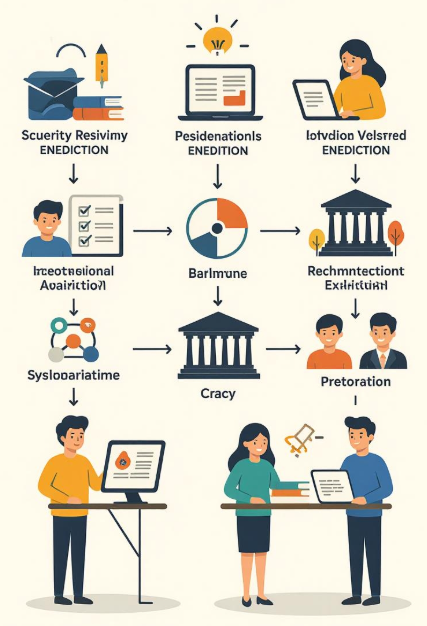If you’ve ever watched your phone battery die at 2 PM and wanted to throw it across the room, Samsung might have just solved your problem. The Korean tech giant isn’t just making incremental improvements to battery life anymore – they’re completely reimagining what batteries can do. We’re talking about batteries that charge in 9 minutes, last for two decades, and might even prevent your phone from turning into a mini furnace.
This isn’t your typical “5% better battery life” upgrade that we see every year. Samsung is working on multiple breakthrough technologies that could fundamentally change how we think about powering our devices. From smartphones that never seem to die to electric cars that charge faster than you can grab a coffee, Samsung’s battery innovations are setting the stage for a completely different future.
The 9-minute Miracle: Ultra-Fast Charging That Actually Works
Let’s start with something that sounds too good to be true. Samsung SDI promised EV batteries that can charge to 80 percent capacity in a mere nine minutes, with production starting in 2026. Nine minutes. That’s barely enough time to use the bathroom and grab a snack at a gas station.
But here’s the thing – this isn’t just marketing hype. Samsung has been quietly working on this technology for years, and they’re finally ready to show what they’ve accomplished. The key breakthrough isn’t just about charging speed; it’s about doing it safely and without destroying the battery in the process.
Traditional fast charging creates heat, and heat is the enemy of battery longevity. Most current fast-charging solutions are like sprinting you can do it, but you can’t keep it up forever without consequences. Samsung’s new approach is more like having a better cardiovascular system that can handle the stress without breaking down.
The technology behind this breakthrough involves completely rethinking how batteries are constructed. Instead of just pushing more power through the same old battery design, Samsung has redesigned the internal structure to handle rapid charging without the usual side effects like overheating or rapid degradation.
Solid-State Batteries: The Holy Grail Finally Within Reach
If ultra-fast charging is impressive, solid-state batteries are downright revolutionary. All-solid-state batteries have a solid electrolyte instead of the liquid used in conventional lithium-ion batteries, making them lighter with better thermal conductivity, faster charging capability, and longer range.
Think of current lithium-ion batteries like a water balloon – they work, but they’re not exactly stable or efficient. Solid-state batteries are more like a solid block of energy. They’re more stable, more efficient, and can pack way more power into the same space.
Samsung’s oxide solid-state battery technology offers an energy density of about 500 Wh/kg, almost twice that of mainstream EV batteries, potentially allowing for a 600+ mile range. For context, most current electric vehicles struggle to get 300 miles on a single charge. Samsung is talking about doubling that.
But it’s not just about electric cars. Samsung launched into solid-state battery research in 2020 with targets set for first prototypes by 2025 and integration into electric vehicles by 2027. That timeline suggests we might see solid-state technology in smartphones and other devices even sooner.
The implications are staggering. Imagine a smartphone that lasts three days on a single charge, weighs less than current phones, and never gets hot during charging. Or an electric car that can drive from New York to Chicago without stopping to charge.
The SUS CAN Revolution: Borrowing From Apple’s Playbook
Here’s where things get interesting from a smartphone perspective. Samsung is planning to implement SUS CAN technology, utilizing stainless steel to improve battery capacity, which will help Samsung compete better in the smartphone market.
The name “SUS CAN” might sound technical, but the concept is brilliantly simple. The battery innovation uses stainless steel to enhance internal battery structure, aiming to improve energy density, support faster charging, and reduce long-term swelling issues.
Battery swelling has been a quiet problem for Samsung for years. You know that feeling when your phone case starts to feel tight, or your phone screen seems slightly raised? That’s battery swelling, and it’s been a persistent issue that Samsung has finally decided to tackle head-on.
The SUS CAN battery technology reportedly increases energy density and charging speed while solving the battery swelling issue commonly found in Galaxy phones. This technology could first appear in the Galaxy S26 series, potentially giving Samsung phones a significant advantage over competitors.
What’s particularly interesting is that this represents Samsung learning from Apple’s approach to battery design. For years, iPhones have generally had better battery optimization and longevity compared to Android phones. Samsung’s adoption of similar structural approaches could level the playing field.
The 20-Year Promise: Batteries That Outlast Your Car
Perhaps the most audacious claim Samsung is making relates to battery longevity. Samsung promised EV batteries that can perform at peak level for 20 years. Twenty years. Most people don’t keep their cars for 20 years, let alone worry about the battery lasting that long.
This isn’t just about electric vehicle batteries either. Samsung’s new solid-state EV batteries come with impressive claims, including a 20-year lifespan, with batteries that can hold around 500 kW per kilogram energy.
The technology that enables this longevity is fundamentally different from current battery chemistry. Traditional lithium-ion batteries degrade because of chemical reactions that happen during charging and discharging cycles. These reactions are unavoidable with current technology – they’re literally part of how the battery works.
Samsung’s new approaches minimize these degrading reactions. Solid-state batteries eliminate many of the chemical processes that cause degradation, while the SUS CAN technology provides better structural integrity that prevents physical breakdown over time.
For consumers, this could mean smartphones that maintain their original battery life for decades, not just years. It could mean electric vehicles that don’t lose driving range as they age. It’s a fundamental shift from batteries being a consumable component to being a permanent part of the device.
Real-World Impact: What This Means for You
All of this technology sounds impressive in theory, but what does it actually mean for regular people? Let’s break it down into practical terms.
For smartphone users, Samsung’s battery innovations could eliminate some of the most annoying aspects of phone ownership. No more carrying power banks everywhere. No more carefully managing your phone usage to make it through the day. No more phones that slow down as the battery degrades.
Early 2025 could see these upgrades, possibly in the Galaxy S26, with the Ultra model potentially packing a 5,500mAh battery. That’s a significant jump from current flagship phones, which typically have batteries around 4,000-4,500mAh.
For electric vehicle adoption, these improvements could eliminate the two biggest concerns people have about EVs: range anxiety and charging time. If you can drive 600 miles on a single charge and recharge in 9 minutes, electric vehicles become as convenient as gas cars for long-distance travel.
The environmental impact could be equally significant. Batteries that last 20 years mean dramatically less electronic waste. Faster charging means more efficient use of charging infrastructure. Higher energy density means smaller, lighter batteries that require fewer raw materials.
The Competition Response
Samsung isn’t operating in a vacuum. Other major players in the battery space are working on similar technologies, and Samsung’s announcements are likely to accelerate development across the industry.
Tesla has been working on their own battery improvements, focusing on different chemistry approaches. Chinese battery manufacturers like CATL are pursuing their own solid-state developments. Even traditional automotive companies are investing heavily in battery research.
What makes Samsung’s approach interesting is their integration across multiple product categories. While some companies focus only on automotive batteries or only on consumer electronics, Samsung is developing technologies that can work across smartphones, tablets, laptops, and vehicles.
This integrated approach could give Samsung significant advantages in manufacturing scale and cost reduction. The same solid-state technology being developed for electric vehicles could eventually make its way into smartphones, and vice versa.
Challenges and Reality Check
Of course, revolutionary battery technology isn’t without challenges. The most significant hurdle is cost. High production costs remain a significant hurdle for solid-state battery technology.
Current solid-state batteries are expensive to manufacture, requiring specialized equipment and processes. While Samsung has demonstrated the technology works, scaling it up to mass production at consumer-friendly prices is still a challenge.
There’s also the question of real-world performance versus laboratory conditions. Battery technology often looks impressive in controlled environments but faces different challenges when used by actual consumers in varying conditions.
Samsung’s timeline is ambitious but not unrealistic. The company initially projected first prototypes by 2025 and integration into electric vehicles by 2027. This suggests that while some technologies might appear in premium devices soon, widespread adoption could take several more years.
The Battery-Powered Future
Samsung’s battery innovations represent more than just incremental improvements. They’re laying the groundwork for a fundamentally different relationship between devices and power.
Imagine a world where you charge your phone once a week instead of once a day. Where electric vehicles are more convenient than gas cars. Where laptops can run for days without plugging in. Where the battery is no longer the limiting factor in device design.
Samsung is unveiling a suite of ‘super-gap’ battery technologies encompassing fast charging and ultra-long life battery as well as mass-production readiness roadmap for all solid-state battery solutions. The term “super-gap” suggests Samsung believes these technologies will create significant competitive advantages.
The timeline for these improvements is compressed compared to typical technology development cycles. While traditional battery improvements have been gradual, Samsung is promising dramatic leaps in capability within the next few years.
The success of these technologies could reshape entire industries. If Samsung delivers on their promises, they won’t just have better batteries – they’ll have changed the fundamental constraints that have limited device design and functionality for decades.
Whether Samsung can execute on all these promises remains to be seen. But the fact that they’re making such bold claims, backed by specific timelines and technical details, suggests they’re confident in their approach. For consumers tired of battery limitations, Samsung’s innovations could finally deliver the power revolution we’ve been waiting for.



